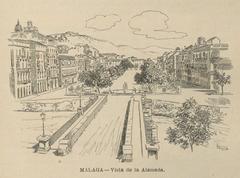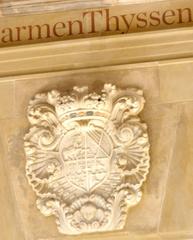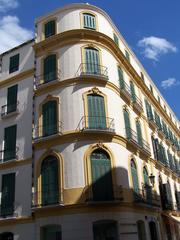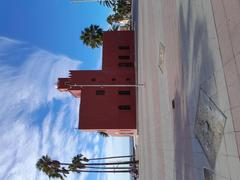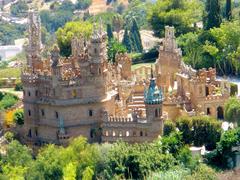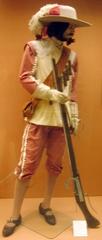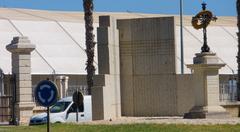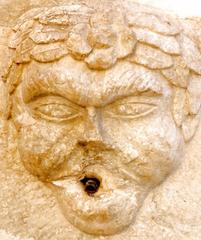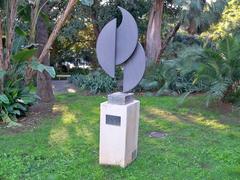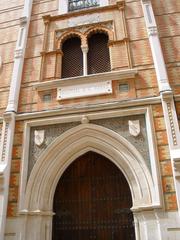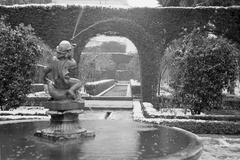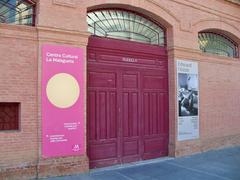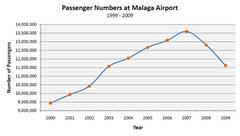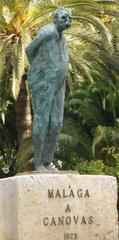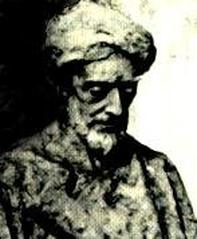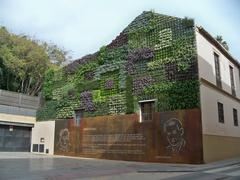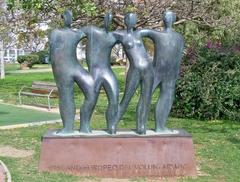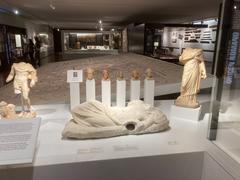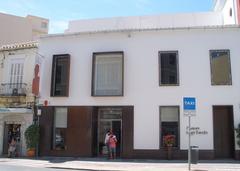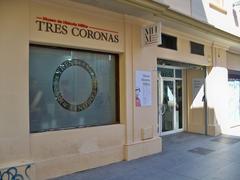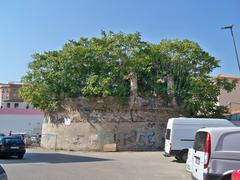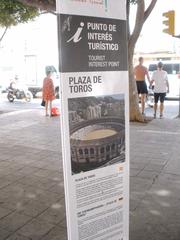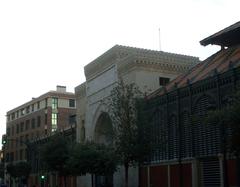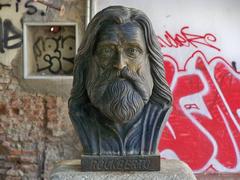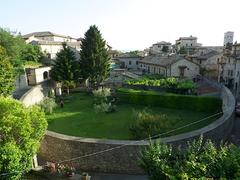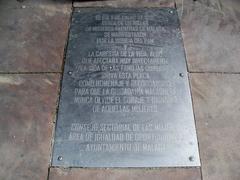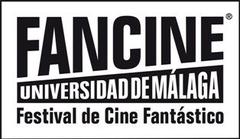Centro Histórico Málaga Visitor’s Guide
Date: 17/07/2024
Introduction
Centro Histórico Málaga is a captivating district that embodies the rich tapestry of Málaga’s historical, architectural, and cultural heritage. Located in the heart of Málaga, Spain, this historic center offers visitors a rare glimpse into the city’s past, from its origins in the Phoenician era to its modern-day cultural renaissance. The area is a living museum, showcasing a blend of architectural styles, including Roman, Moorish, Renaissance, and modern influences (Malaga Turismo). With its narrow, winding streets lined with traditional Andalusian houses, Centro Histórico is as picturesque as it is historically significant. Visitors can explore a myriad of attractions, such as the Alcazaba fortress, the Roman Theatre, and the Málaga Cathedral, each offering a unique insight into different periods of the city’s history (Roman Theatre, Málaga Cathedral). The district is also a vibrant cultural hub, home to museums like the Picasso Museum and the Carmen Thyssen Museum, as well as numerous festivals and events that celebrate Málaga’s traditions and artistic heritage (Picasso Museum, Carmen Thyssen Museum). Whether you are a history buff, an art enthusiast, or simply a curious traveler, Centro Histórico Málaga promises an enriching and unforgettable experience.
Table of Contents
- Introduction
- History and Significance
- Visitor Information
- Nearby Attractions
- Accessibility
- Festivals and Events
- Conclusion
- FAQ
History and Significance
Ancient Beginnings
The history of Málaga’s Centro Histórico dates back to the Phoenician era, around 770 BC, when the city was founded as Malaka. The name is believed to derive from the Phoenician word for salt, reflecting the city’s early role in the fish salting industry. The strategic location of Málaga on the Mediterranean coast made it a significant port for trade and cultural exchange. The Phoenicians were followed by the Carthaginians, who further developed the city.
Roman Influence
In 218 BC, Málaga came under Roman control during the Second Punic War. The Romans named the city Malaca and integrated it into the Roman province of Hispania Ulterior. The Roman period saw significant urban development, including the construction of a theater, which remains one of the city’s most important archaeological sites today. The Roman Theatre, located at the foot of the Alcazaba fortress, is a testament to the city’s historical significance and is a popular tourist attraction (Roman Theatre).
Moorish Era
The Moorish conquest of Málaga in 711 AD marked a new chapter in the city’s history. Under Muslim rule, Málaga became an important center of trade and culture in Al-Andalus. The Moors constructed the Alcazaba, a palatial fortress that served as the residence of the Muslim rulers. The Alcazaba, with its intricate architecture and lush gardens, remains one of the best-preserved Moorish fortresses in Spain (Alcazaba).
Reconquista and Christian Rule
In 1487, Málaga was conquered by the Catholic Monarchs, Ferdinand and Isabella, during the Reconquista. The city’s capture was a significant milestone in the Christian reconquest of Spain. Following the conquest, many of the city’s mosques were converted into churches, and new Christian monuments were built. The most notable of these is the Málaga Cathedral, also known as La Manquita (the One-Armed Lady) due to its unfinished second tower. The cathedral, built on the site of a former mosque, is a blend of Gothic, Renaissance, and Baroque architectural styles (Málaga Cathedral).
Modern Era and Cultural Renaissance
The 19th and 20th centuries brought significant changes to Málaga’s Centro Histórico. The city experienced industrial growth, particularly in the textile and wine industries. However, it was the cultural renaissance of the late 20th and early 21st centuries that truly transformed the historic center. The opening of the Picasso Museum in 2003, dedicated to Málaga’s most famous son, Pablo Picasso, marked the beginning of a cultural revival. The museum, housed in the Buenavista Palace, showcases an extensive collection of Picasso’s works and attracts art enthusiasts from around the world (Picasso Museum).
Visitor Information
Ticket Prices
Visiting Centro Histórico Málaga is generally free, but specific attractions like the Alcazaba, the Roman Theatre, and the Picasso Museum may have entrance fees. It is recommended to check the official websites for the most current prices.
Opening Hours
Opening hours for the historic center and its attractions vary. The Alcazaba is typically open from 9 AM to 8 PM, while the Roman Theatre and the Picasso Museum have their own schedules. It is advisable to check in advance to plan your visit accordingly.
Travel Tips
- Best Time to Visit: Early mornings or late afternoons are ideal to avoid the crowds and enjoy cooler temperatures.
- Getting There: Centro Histórico is easily accessible by public transport, including buses and trains. Parking can be challenging, so using public transport is recommended.
- Guided Tours: Consider joining a guided tour to gain deeper insights into the history and significance of the historic center.
Nearby Attractions
Centro Histórico Málaga is surrounded by other notable attractions such as the Gibralfaro Castle, the Málaga Park, and the vibrant port area. These sites are within walking distance and offer additional experiences for visitors.
Accessibility
The historic center is pedestrian-friendly, with many areas accessible to people with disabilities. However, some attractions may have limited accessibility due to their historical nature. It is advisable to check accessibility options in advance.
Festivals and Events
Centro Histórico is the heart of Málaga’s vibrant cultural scene. The city hosts numerous festivals and events throughout the year, many of which take place in the historic center. The Málaga Fair, held in August, is one of the city’s most important festivals, featuring parades, music, dancing, and traditional Andalusian costumes. The Holy Week processions, known as Semana Santa, are another major event, attracting thousands of visitors who come to witness the elaborate religious processions that wind through the historic streets (Málaga Fair, Semana Santa).
Conclusion
Centro Histórico Málaga is a must-visit destination for anyone interested in exploring the historical and cultural essence of this Spanish city. From its ancient beginnings to its modern-day cultural renaissance, the historic center offers a unique and enriching experience for all visitors.
FAQ
- What are the visiting hours for Centro Histórico Málaga? Visiting hours vary for different attractions. The Alcazaba typically opens from 9 AM to 8 PM.
- How much do tickets cost for Centro Histórico Málaga? Admission fees vary by attraction; some are free while others, like the Picasso Museum, charge an entrance fee.
- What are the best times to visit Centro Histórico Málaga? Early mornings or late afternoons are recommended for a more comfortable experience.
References
- Malaga Turismo Alcazaba
- Malaga Turismo Roman Theatre
- Malaga Turismo Málaga Cathedral
- Museo Picasso Málaga Picasso Museum
- Carmen Thyssen Málaga Carmen Thyssen Museum
